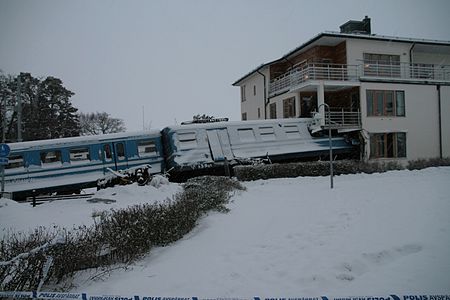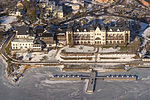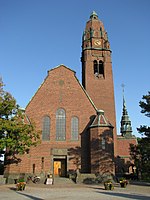2013 Saltsjöbanan train crash
2013 disasters in Sweden2013 in SwedenDerailments in EuropeJanuary 2013 events in EuropeNacka Municipality ... and 2 more
Railway accidents and incidents in SwedenRailway accidents in 2013

The 2013 Saltsjöbanan train crash occurred in the early morning hours of 15 January 2013. A passenger train started to move without authorization, with only a cleaner on board. It overran a set of buffer stops and crashed into a block of flats in Saltsjöbaden, Sweden. The cleaner was at first suspected of having "stolen" the train, but was later cleared of blame, as the train was found to have started moving because of violation of safety procedures.
Excerpt from the Wikipedia article 2013 Saltsjöbanan train crash (License: CC BY-SA 3.0, Authors, Images).2013 Saltsjöbanan train crash
Saltsjögränd, Nacka kommun
Geographical coordinates (GPS) Address Nearby Places Show on map
Geographical coordinates (GPS)
| Latitude | Longitude |
|---|---|
| N 59.27894 ° | E 18.313785 ° |
Address
Saltsjögränd 10
133 36 Nacka kommun
Sweden
Open on Google Maps







